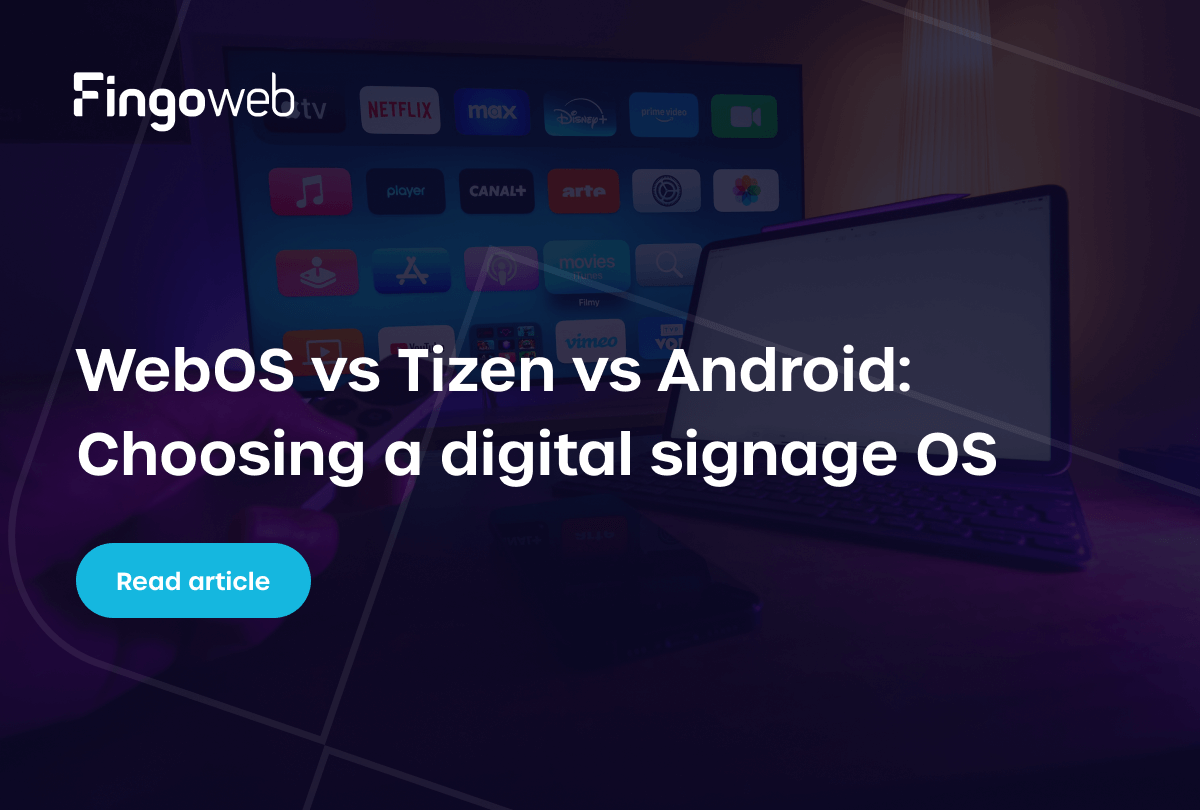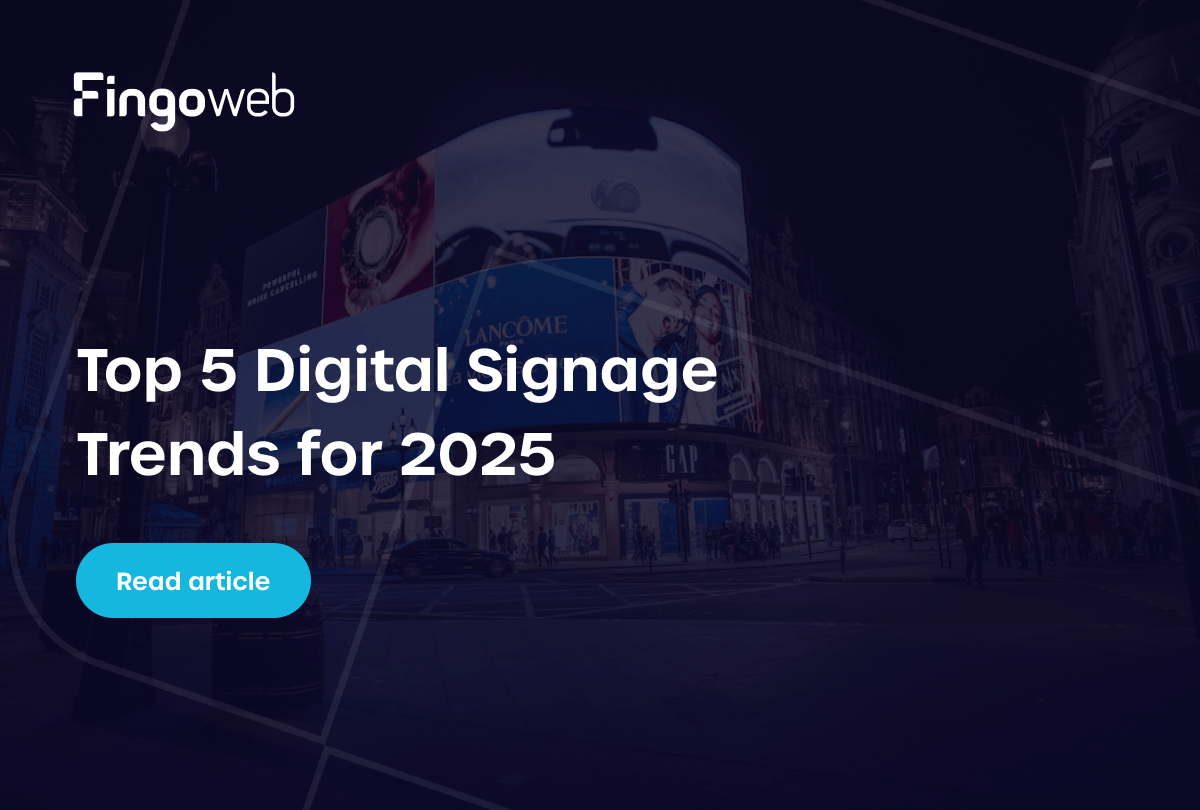A digital kiosk has become an essential part of modern customer service – across retail, public administration, and service industries. More and more businesses and institutions are turning to these solutions to boost efficiency, reduce queues, and provide users with intuitive access to information. With a wide variety of models on the market, choosing the right digital kiosk can be challenging. That’s why we’ve prepared a comprehensive overview of Polish manufacturers to help you make an informed decision.
Before diving into specific brands, it’s helpful to understand the four main categories of digital kiosks:
- Vertical touch kiosks – sleek and compact, perfect for reception areas and information points
- Angled touch kiosks – user-friendly and often found in medical facilities and government offices
- Non-touch totems – tall and highly visible, commonly used in shopping malls and urban spaces
- POS terminals – specialized units designed for processing payments and placing orders
Explore which type of digital kiosk best suits your needs and discover some of the most notable Polish manufacturers on the market.
Vertical touchscreen digital kiosk
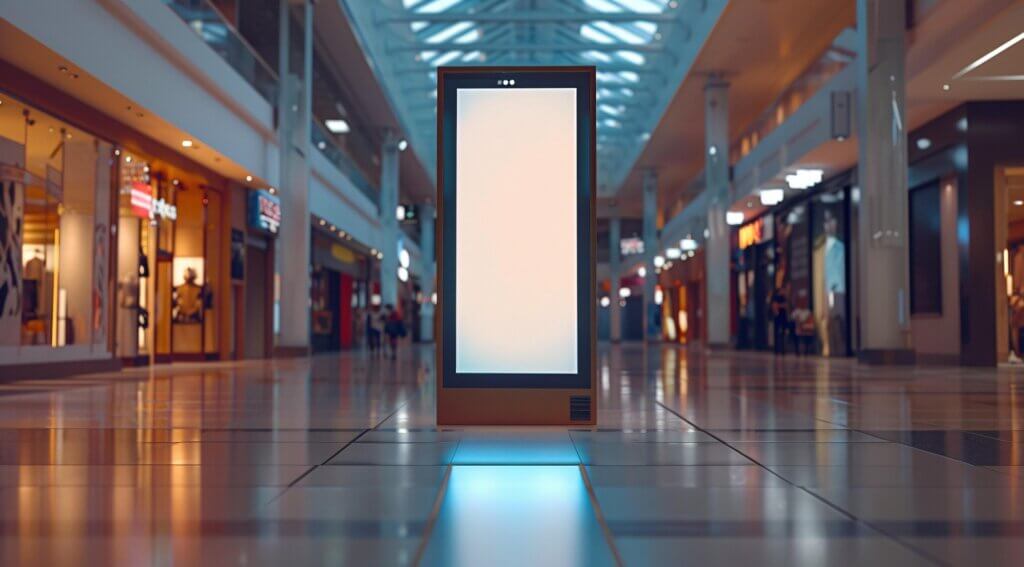
A vertical digital kiosk is a freestanding device with a large, portrait-oriented touchscreen. It combines modern design with functionality, enabling easy interaction with digital content, forms, or applications.
Common use cases
Vertical digital kiosks are widely used across various industries thanks to their versatility and ease of use. Here are the most common applications:
- displaying informational and advertising content,
- quick registration or login,
- queue and reservation management,
- user identification (e.g. QR code, card),
- receptions.
Pros and cons of vertical touchscreen digital kiosk
Vertical digital kiosks feature a modern design and take up little space, making them easy to install even in limited areas. Thanks to their large screens, they offer clear content display and comfortable operation. Their universal construction makes them suitable for many scenarios, with the added benefit of easy maintenance and the ability to customize the casing for branding purposes.
Among the drawbacks, it’s worth mentioning the limited working area, which may be less convenient for more complex interactions. Due to their height, these kiosks can be less accessible for people with disabilities, and their vertical layout is not always ideal for presenting video content or applications that require a wide view.
Our recommendations for vertical digital kiosk
Vertical digital kiosks are the most popular category, which is why we have many options from different companies to showcase in this segment. Before we begin, it’s worth noting that kiosks can vary in specifications such as screen orientation and size (measured in inches). You’ll also find both single- and double-sided models on the market, each differing slightly in components like CPU, GPU, and RAM.
The first kiosk we recommend is the single-sided LCD totem by Ledsee. By default, it comes with an IR touchscreen, but for an additional 500 PLN, you can upgrade to a much more precise and durable PCAP system, which is also more resistant to dirt and outdoor conditions. This device is available in various sizes: 32", 43", 55″, 65" and 75".
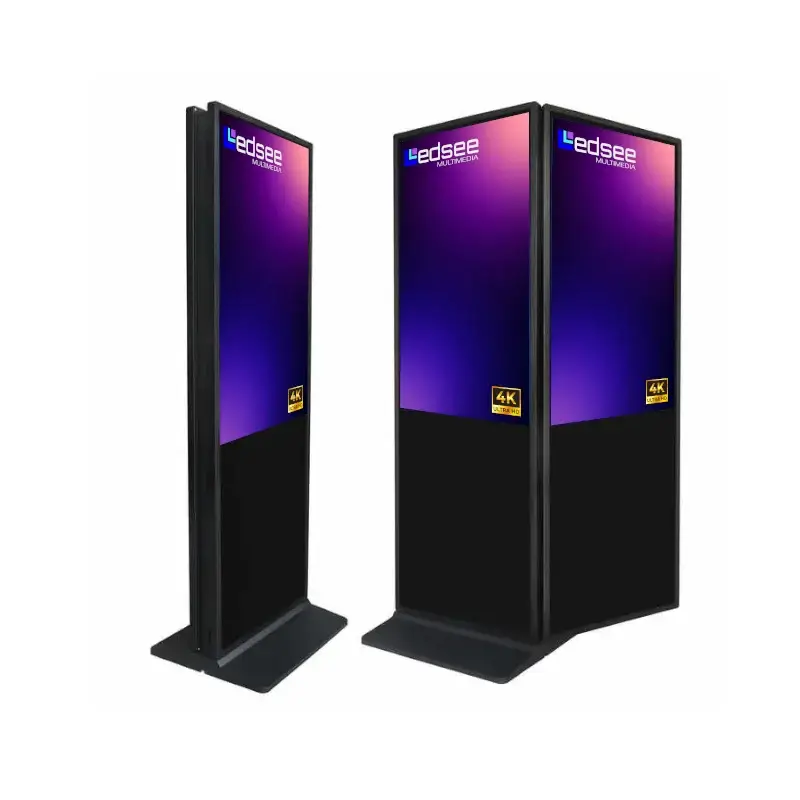
Ledsee also offers sleek full-screen models, with displays stretching from the very bottom to the top of the device, available in 75" and 85" sizes. Another interesting option is the 55-inch rotating totem, which can be set to either horizontal or portrait mode, depending on your preference. All of the above models are single-sided, but Ledsee also has a double-sided option in its lineup. This 55-inch kiosk features a 4K display and is capable of showing content on both the front and back of the unit – a unique and eye-catching solution.
The second company in our lineup is Alltrim, which offers two interesting devices with significantly more internal storage. While the previous kiosks featured 32 GB of storage, Alltrims's 32-inch model comes equipped with a 120 GB SATA SSD. The 43-inch version goes even further, featuring a high-speed 240 GB SSD using the M.2 PCIe protocol. These drives allow for storing a larger amount of content locally, ensuring continuous content display even if the device loses connection to the central management system.
Slanted touchscreen digital kiosk
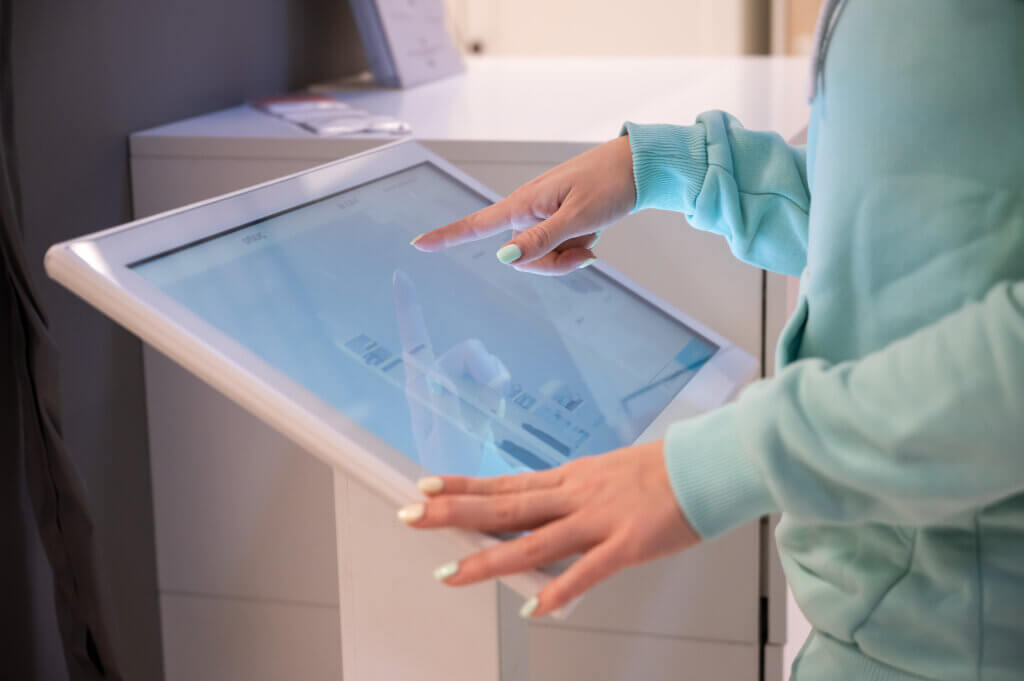
An angled touch digital kiosk is an ergonomic version of the kiosk, designed for comfortable use while standing or sitting. Thanks to its tilted screen, the user benefits from better visibility and a more natural posture during interaction, resulting in greater comfort and more intuitive operation.
Where angled kiosks fit best
Angled digital kiosks are best suited for locations where comfortable and intuitive close-up interaction is needed, including:
- presenting offers and placing orders,
- filling out forms and surveys,
- customer service in self-service mode,
- use in medical facilities and public institutions,
- information points in shopping malls.
Benefits and drawbacks of tilted interface kiosks
Angled digital kiosks offer an ergonomic screen position, which significantly improves user comfort – especially during longer interactions. This layout supports precise touch control and reduces hand fatigue. Additional advantages include better readability at close range and a greater sense of privacy while using the kiosk.
On the downside, they require a larger base area, taking up more space compared to vertical kiosks. Due to the lower screen position, they may be harder to see from a distance. They’re also less effective for displaying promotional or presentation content meant to catch the attention of passersby.
Popular slanted digital kiosk options for your business
In this case, the selection is slightly smaller but still diverse. All devices in this category feature a horizontal (landscape) screen layout.
The most expensive – but also the best – option in terms of size and specifications is the podium-style kiosk from Alltrim, a company already mentioned earlier. Its large 55-inch 4K screen delivers an outstanding user experience. The company also offers a much smaller 21,5-inch alternative with a Full HD display.
Another angled digital kiosk worth considering is the 32-inch StreamLine from Epicenter. It features a Samsung display and a sturdy 6 mm thick steel base with rubber feet for stability.
Non-touch totems
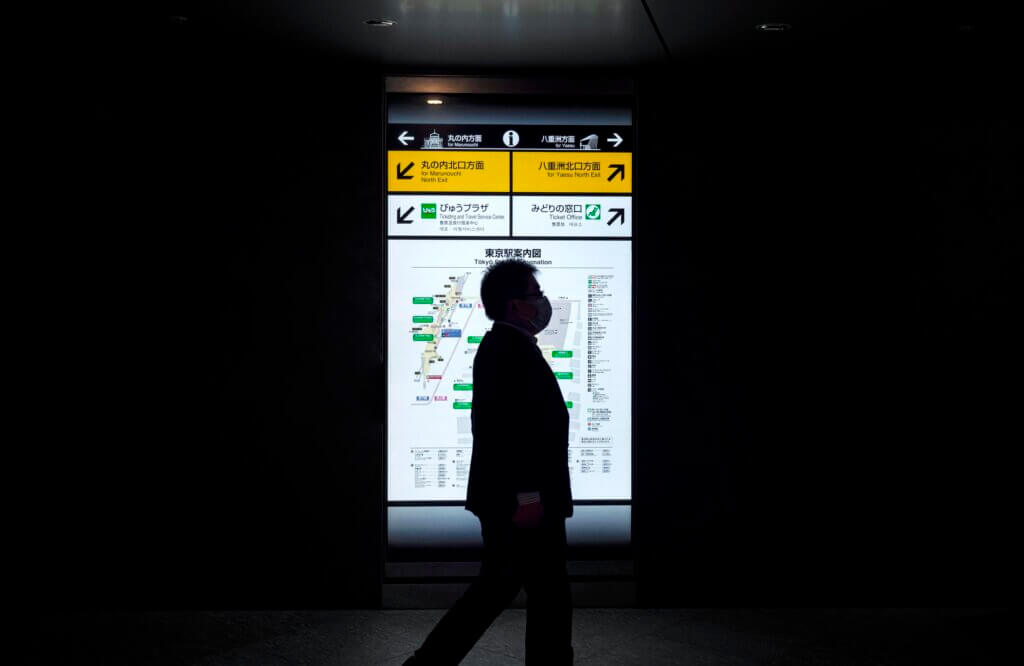
A non-touch digital totem is a single- or double-sided structure used primarily for displaying visual content. It serves an informational or promotional function, attracting attention with its large, highly visible screen.
Optimal situations for passive digital totems
Passive totems are a good choice when:
- the goal is to attract attention using promotional or informational content,
- no user interaction with the device is required,
- content needs to be visible from a long distance (e.g. in lobbies, airports, shopping centers),
- continuous, uninterrupted display of promotional materials is needed,
- there’s a need to reduce costs related to touchscreen operation and maintenance,
- content is planned to be centrally managed, without on-site user input.
Advantages and limitations of non-interactive totems
Passive digital totems are more cost-effective to produce and operate, as they don’t require touchscreens or complex software. Their simple construction results in higher reliability and a lower risk of failure. With their large screens, they work well as carriers for advertisements or informational messages visible from a distance.
However, their main drawback is the lack of interactivity, limiting them to one-way communication. Content must be carefully planned and regularly updated, since users cannot control what is displayed. Passive totems may also be less engaging for viewers compared to their interactive counterparts.
Best non-touch totems
In this category, the double-sided Smart Line Digital Totem from Epicenter stands out. It’s available in two sizes – 43 or 50 inches. The device features two independent 4K Samsung displays, allowing different content to be shown on each side of the kiosk. Unlike typical touch kiosks, this model is built with enhanced durability in mind, making it more resistant to outdoor conditions and various weather factors.
Touchscreen POS terminal
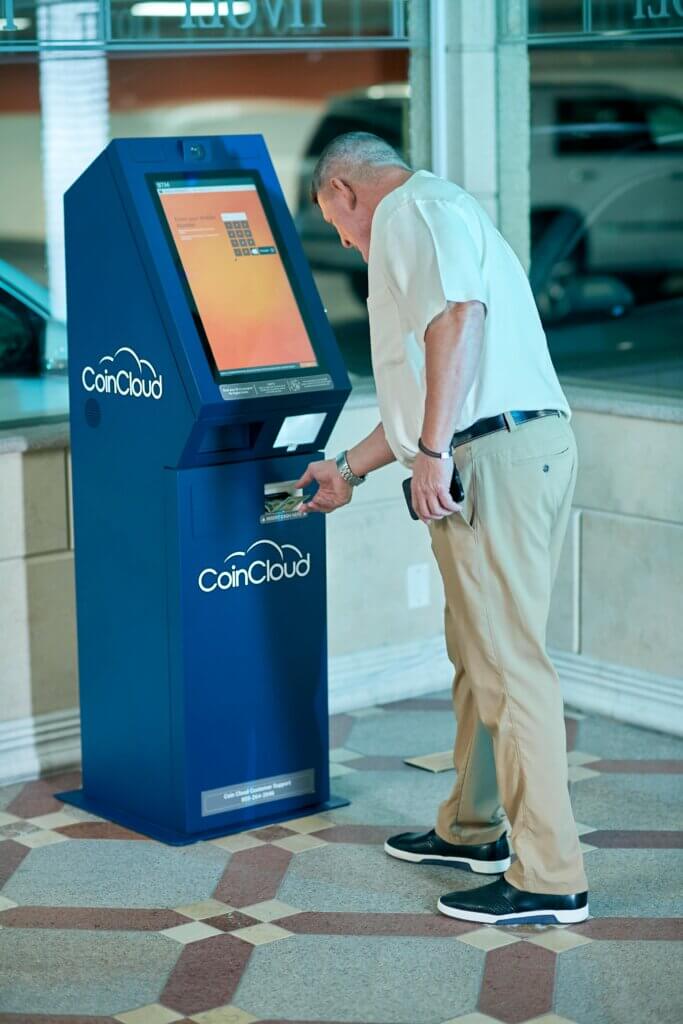
A POS terminal with a touchscreen is an interactive device used for handling payments, orders, and other sales operations. It combines the functionality of a traditional checkout point with a modern, user-friendly touch interface.
Common applications for POS terminals
Typical applications of touchscreen POS terminals:
- handling sales in retail and food service locations,
- allowing customers to place orders (e.g. in fast food restaurants),
- self-service checkout in stores and supermarkets,
- issuing receipts, invoices, and processing payments,
- integration with inventory and loyalty systems,
- managing bookings and payments in hotels or service points.
Strengths and weaknesses of touchscreen POS hardware
Touchscreen POS terminals offer a fast and intuitive way to handle transactions, significantly speeding up the sales process and improving convenience for both customers and staff. They can be integrated with inventory, loyalty, and payment systems, allowing for comprehensive sales management. Thanks to their compact design, they take up little counter space and often offer interface customization options.
However, they are more prone to mechanical damage and dirt, especially with heavy use. Their performance depends on the quality of the software – poorly optimized systems can slow down operations. Additionally, in the event of a device failure, sales operations may be temporarily disrupted.
Our most reliable picks for POS terminals
Looking for the right multimedia kiosk for your business? Here are two reliable and widely used options – one in a vertical format, the other with a gently tilted design for more comfortable use at close range.
Infokiosk RS firmy river-kiosk is a modern self-service station equipped with a 31.5-inch TFT-LCD display and a responsive PCAP touch screen. It's available as a single- or double-sided unit, making it ideal for areas with heavy foot traffic. You can choose between wall-mounted or freestanding installation. The kiosk includes a built-in QR code scanner, printer, and speakers – a ready-to-use solution for digital information and service delivery.
PremiumHRCS od Infokiosk offers a more compact and ergonomic design, with a slightly tilted screen that enhances user comfort. It features a high-quality iiyama display, available in sizes from 19 to 24 inches, depending on your preference. The device can be customized with optional add-ons like a card reader, scanner, thermal printer, ticket printer, keyboard with trackball, camera, speakers, or leaflet dispenser.
These two kiosks differ in shape, size, and available features – giving you the flexibility to choose the one that best fits your environment and customer needs. Whether you need a high-visibility information point or a compact, interactive station, both models offer solid, adaptable solutions.

FAQ - Digital kiosk
What is the difference between a digital kiosk and a touchscreen POS terminal?
A digital kiosk is a versatile device designed primarily for presenting content, collecting data, or enabling user interaction with informational or service-based applications. It can operate independently and serve various purposes – from registration to marketing. A POS terminal, on the other hand, is a specialized tool designed specifically for handling sales transactions, payments, and managing points of sale. While both may feature touchscreens, the POS terminal is focused on sales operations, whereas the kiosk is centered on self-service and communication.
How do I choose the right digital kiosk for my business needs?
When choosing a device, it’s important to consider:
- Type of interaction: Should the kiosk be touch-enabled or passive (e.g. for content display only)?
- Purpose: Is it intended for registration, information, advertising, payments, or self-service sales?
- Available space: Is a vertical kiosk, angled kiosk, totem, or POS terminal the best fit?
- Target audience: Will the users include seniors, children, or people with disabilities?
- System integration: Should the device connect to a database, reservation system, payment gateway, etc.?
- Customization options: Can the casing, software, and branding be tailored to your company?
Can digital kiosks be customized for different industries?
Yes – digital kiosks are highly versatile and can be successfully adapted to various industries, including retail, hospitality, healthcare, public administration, transportation, tourism, and education. With configurable software, a wide range of enclosure formats, and integration with external systems, they can support both customer service and internal business processes.






